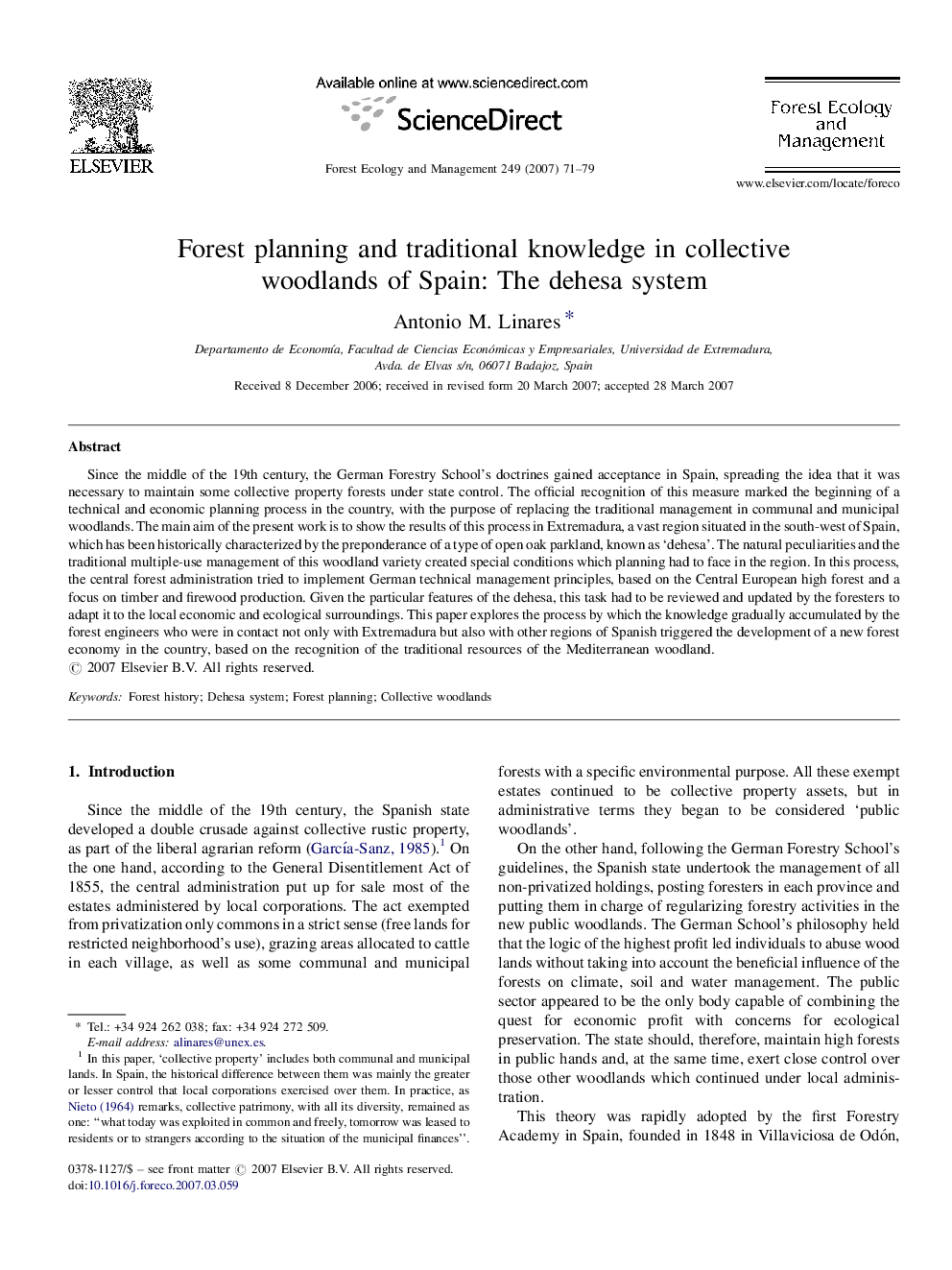| Article ID | Journal | Published Year | Pages | File Type |
|---|---|---|---|---|
| 90167 | Forest Ecology and Management | 2007 | 9 Pages |
Since the middle of the 19th century, the German Forestry School's doctrines gained acceptance in Spain, spreading the idea that it was necessary to maintain some collective property forests under state control. The official recognition of this measure marked the beginning of a technical and economic planning process in the country, with the purpose of replacing the traditional management in communal and municipal woodlands. The main aim of the present work is to show the results of this process in Extremadura, a vast region situated in the south-west of Spain, which has been historically characterized by the preponderance of a type of open oak parkland, known as ‘dehesa’. The natural peculiarities and the traditional multiple-use management of this woodland variety created special conditions which planning had to face in the region. In this process, the central forest administration tried to implement German technical management principles, based on the Central European high forest and a focus on timber and firewood production. Given the particular features of the dehesa, this task had to be reviewed and updated by the foresters to adapt it to the local economic and ecological surroundings. This paper explores the process by which the knowledge gradually accumulated by the forest engineers who were in contact not only with Extremadura but also with other regions of Spanish triggered the development of a new forest economy in the country, based on the recognition of the traditional resources of the Mediterranean woodland.
